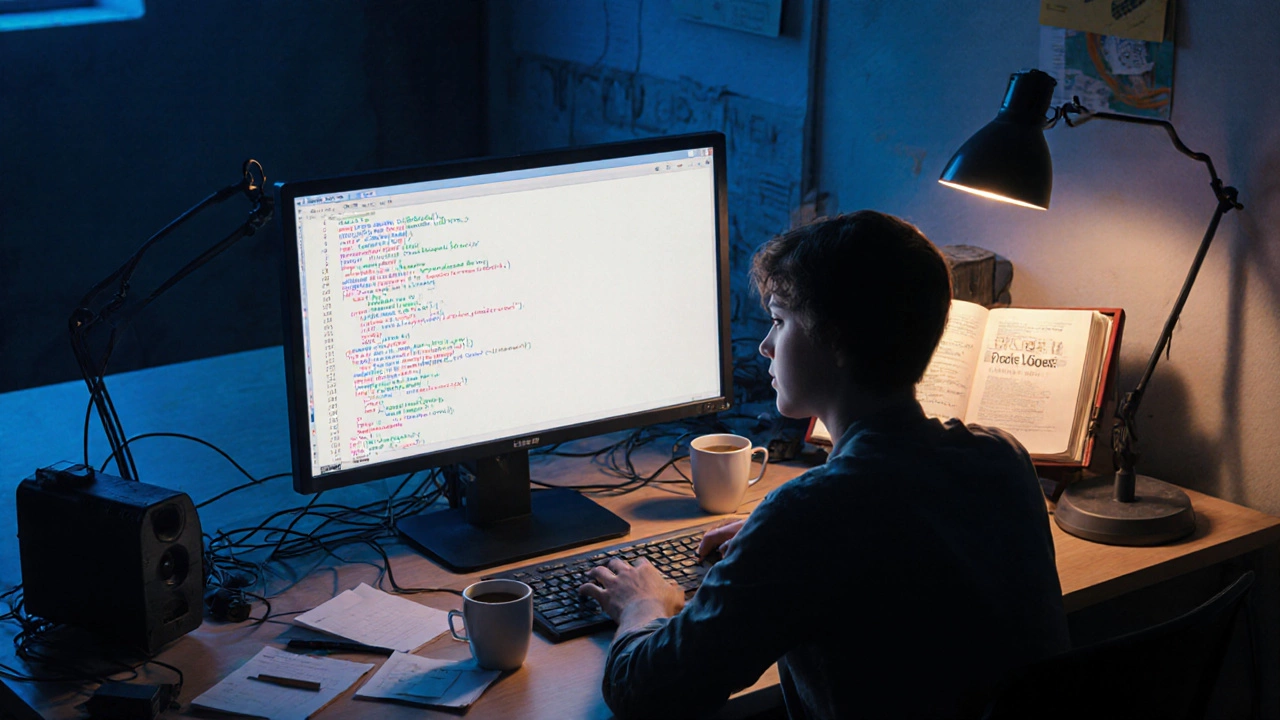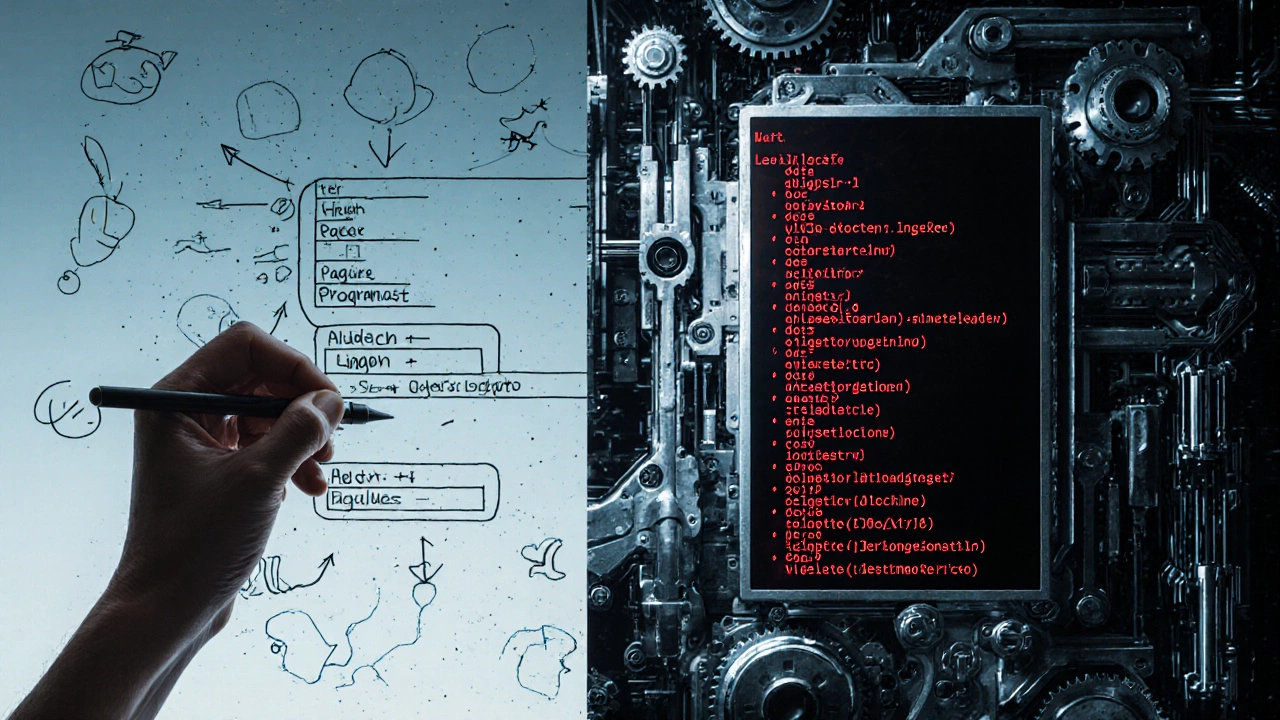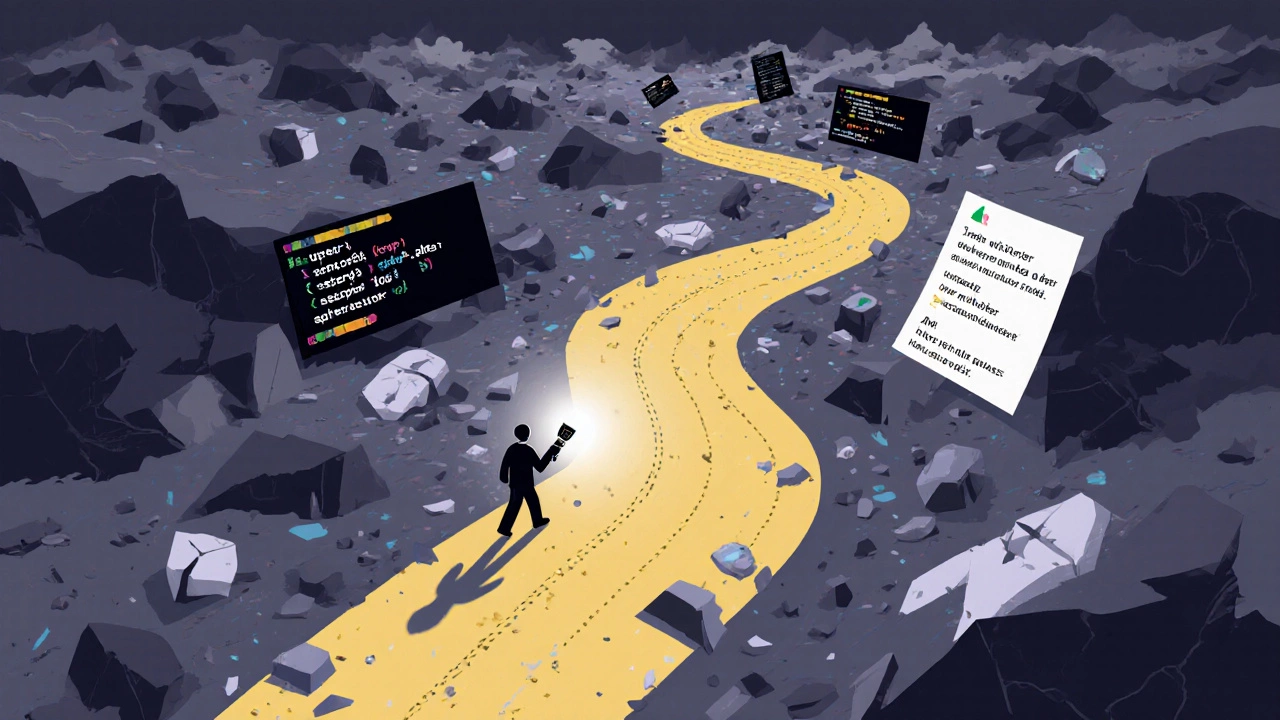
Debugging Challenge Simulator
The Real Challenge: Finding the Hidden Bugs
This simulation demonstrates the article's core message: the hardest part of coding isn't syntax—it's finding where your logic breaks. Try to solve this real-world problem before checking the solution.
function calculateGrade(score) {
if (score >= 90) return 'A';
if (score >= 80) return 'B';
if (score >= 70) return 'C';
if (score >= 60) return 'D';
return 'F';
}
Debugging Steps:
Everyone starts coding with excitement. You watch videos of people building apps in minutes, read stories about self-taught developers landing six-figure jobs, and think, ‘I can do this too.’ But after a few weeks, something shifts. The syntax feels familiar, the tutorials make sense, yet you’re stuck. Not because you don’t understand the code-but because you can’t make it work. That’s when you realize: the hardest thing about coding isn’t learning a language. It’s learning how to think like a machine.
The Real Problem Isn’t Syntax
You don’t struggle because Python’s indentation is weird or JavaScript’s async behavior is confusing. You struggle because you’re trying to solve problems the way humans do-intuitively, emotionally, with shortcuts. Computers don’t care about your intent. They don’t fill in the blanks. They don’t guess what you meant. If you write if (x = 5) instead of if (x == 5), the computer won’t say, ‘Oh, you probably meant to compare.’ It’ll assign 5 to x and move on. And suddenly, your whole program breaks.
That’s the first shock. Coding isn’t about writing pretty lines. It’s about being precise. Every semicolon, every bracket, every capital letter matters. And when something goes wrong, the error message doesn’t say ‘You forgot to check if the user is logged in.’ It says ‘Uncaught TypeError: Cannot read property ‘name’ of undefined.’ Now you have to trace back through ten files, three functions, and a network call to find where that variable got lost.
Debugging Is the Real Skill
Most coding classes teach you how to write code. Very few teach you how to fix it. And yet, 80% of a developer’s time is spent debugging-not writing new features, not optimizing, not designing architectures. Just fixing what’s broken.
Think about it: you write 50 lines of code. It runs. It looks right. But the output is wrong. You check the logic. You print variables. You test edge cases. You restart the server. You Google the error. You ask a friend. You stare at the screen for an hour. Then you find it-a missing comma in a JSON file buried in a config folder you didn’t even know existed.
That’s the grind. And it’s not glamorous. No one posts TikToks about it. But it’s the core of real coding. The ability to sit with confusion, break problems into tiny pieces, and methodically eliminate possibilities is what separates beginners from people who actually ship software.
The Invisible Weight of Assumptions
Here’s something no tutorial tells you: you’ll make assumptions so basic, you won’t even notice them.
You assume the user will enter a number. They enter ‘five’.
You assume the API will respond in under a second. It times out.
You assume the database is always connected. It’s down for maintenance.
You assume your code will run on your machine. It crashes on the server because the OS is different.
These aren’t edge cases. They’re daily realities. The hardest part of coding isn’t the language. It’s remembering that the real world is messy. Users are unpredictable. Networks fail. Servers crash. Libraries get deprecated. Your ‘perfect’ code breaks because someone else changed something you didn’t know existed.
That’s why experienced developers spend more time reading documentation, writing tests, and planning for failure than writing the actual logic. They know: if you don’t test for chaos, chaos will test you.

Getting Stuck Is Normal-But Most People Quit
When you’re learning to code, every bug feels personal. You think, ‘I’m not smart enough.’ ‘Maybe I’m just not cut out for this.’ But here’s the truth: every programmer, no matter how good, gets stuck for hours. Days. Sometimes weeks.
The difference? They don’t give up because they think they’re failing. They know they’re learning.
There’s a study from Carnegie Mellon that tracked 1,200 students in their first programming course. The ones who passed didn’t have higher IQs. They didn’t have more experience. They just kept going longer after hitting walls. They asked for help sooner. They wrote down what they tried. They didn’t treat bugs as failures-they treated them as data points.
If you’re stuck right now, you’re not behind. You’re exactly where you need to be.
How to Get Better at the Hard Part
So what can you actually do? Here’s what works:
- Write it down. When you’re stuck, open a text file and explain the problem out loud-like you’re teaching it to a 10-year-old. You’ll spot the flaw before you finish.
- Break it smaller. Don’t try to fix the whole app. Isolate one function. Test it alone. Use console.log() or print statements. Make it dumb simple.
- Use version control. Git isn’t just for teams. Use it to save snapshots of your code before you make changes. That way, if you break something, you can roll back without panic.
- Read other people’s code. Not just tutorials. Look at open-source projects on GitHub. See how they handle errors. See how they structure files. You’ll learn more from bad code than perfect tutorials.
- Accept that you won’t understand everything. Even senior devs Google things daily. That’s not weakness. It’s efficiency.

Why This Matters More Than You Think
The hardest thing about coding isn’t just a skill you need to pass a class or land a job. It’s a mindset that changes how you approach every problem in life.
When you learn to debug, you learn patience. You learn to question your assumptions. You learn that the solution isn’t always in the obvious place. You learn that progress isn’t linear. That’s why people who code well end up leading teams, starting companies, or solving complex problems in science, finance, or healthcare-even if they never become professional developers.
Coding teaches you how to think when things don’t work. And in a world full of broken systems, that’s the most valuable skill you can build.
Final Thought: You’re Not Behind
There’s no magic moment when coding suddenly becomes easy. It gets easier because you keep going. Because you stop waiting for inspiration and start showing up-even when you’re frustrated. Even when you feel stupid. Even when the error message makes no sense.
The hardest thing about coding isn’t the language. It’s the quiet, daily decision to keep trying when nothing seems to work. And if you’re still here, reading this? You’re already doing it.
Is coding hard because you need to be good at math?
No. Most coding doesn’t require advanced math. Basic arithmetic and logic are enough for 90% of tasks. You don’t need calculus to build a website, an app, or even an AI tool. What you need is problem-solving patience. If you can follow a recipe step by step, you can code.
Why do I understand tutorials but can’t build anything on my own?
Tutorials walk you through every step. Real projects don’t. That gap is called ‘the valley of despair.’ It’s normal. To cross it, start small: rebuild the tutorial project from memory. Then change one thing-like the color or the button text. Then another. Slowly, you’ll build confidence to create from scratch.
How long does it take to get past the frustration stage?
There’s no fixed timeline. Some people hit their stride after 3 months. Others take a year. It depends on how often you practice, not how long you’ve been studying. Coding is like playing an instrument-you improve with deliberate practice, not just time passed. Aim for 30 minutes a day, five days a week. That’s more effective than 5 hours once a week.
Is it normal to copy code from the internet?
Yes. Every developer does it. The key is to understand what you’re copying. Don’t just paste. Read it. Change variable names. Delete parts you don’t need. Ask yourself why it works. That’s how you learn. Copying without understanding is how you stay stuck.
What’s the best way to learn debugging?
Start with small projects and break them on purpose. Write code that crashes. Then fix it. Use browser dev tools or print statements. Read error messages carefully-they often tell you exactly where the problem is. Keep a log of bugs you’ve fixed. Over time, you’ll start recognizing patterns.
